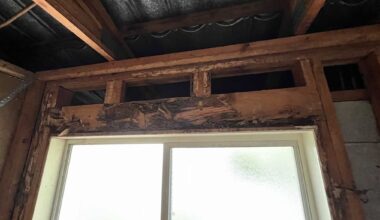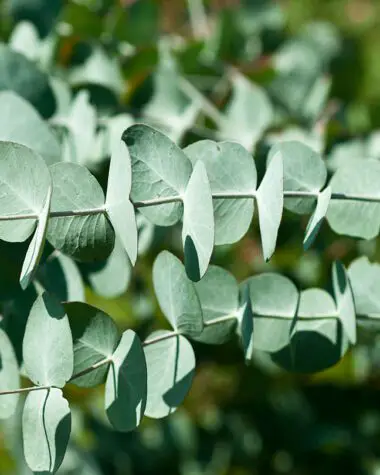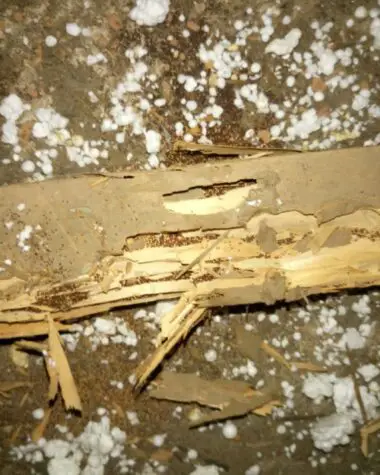Several types of bugs can damage your wood. They can eat the wood or destroy it by burrowing inside to create a nest. You can easily determine if these insects cause serious damage due to the signs that they leave behind. The most common that you can find are small holes or sawdust on the surface of an infested wood.
There are also some instances that the damage may not be visible to the naked eye. In some cases, wood bugs can leave particles or bite human skin, which causes irritation and rashes. So, you must watch out for signs of these wood-destroying bugs.
Here’s a quick guide on identifying wood bugs and preventing a wood infestation that can cause serious threats to your wood structure and even to you.
Types of bugs that eat or damage wood
If you suspect a possible wood infestation caused by bugs, you must watch out for these signs to identify them and respond effectively to eliminate the pests.
Termites
One of the insects that live in the cellulose of wood is termite. They have wings and often create a series of tunnels in the wood by chewing on it. If you look at the infested wood, it may look good on the outside. But, once you try to probe it with any tool, you will notice that the wood will crumble.
A certain type of termite known as the subterranean termites usually build their nets underground. They also need a specific moisture level to survive. Thus, they often feast on the wood closest to the soil.
This is the reason why wood in a damp basement, as well as structural lumber, are the favorite targets and the most vulnerable to termite attacks.
Another type of termite is the dry wood termite, which consumes dry wood used in fence posts, structural lumber, and dead tree limbs. They are the ones that don’t make their nest underground and often invade your house above the ground.
Wood Borers
Bugs that usually eat open trees, acorns, and nuts are commonly known as wood borers. These are the insects that dig holes in the wood to create shelter for their larvae. Once hatched, mature adults will start mating and continue the cycle. Hence, destroying the wood over again.
Other types of wood-boring insects include metallic wood borers, wood wasps, bark beetles, and long-horned beetles. They only vary in appearance depending on their specific species. Common wood borers are typically cigarette-shaped, dark brown to black in color, with reddish legs and antennae. While the larva is white and curve-shaped, usually 3 mm long.
The smallest species is the bark beetle which measures around 1/8 inch in length compared to the 2-inch long-horned beetle. These bugs are commonly found in firewood, log homes, and other structural wood.
Carpenter Ants
Another bug that damages wood is the carpenter ant. They don’t really eat the wood but usually use it as a net. The carpenter ants come in various colors depending on the carpenter ant species.
They can come in red, black, yellow, and brown. You may also find some carpenter ants with a wing, like termites. The carpenter ants’ wings on the front are longer than the back. On the other hand, termites have equal-sized wings on both front and back.
If there is any rotting wood in your basement or any parts of your house, like the windows, then that is the perfect entry point for carpenter ants to invade your property.
Powder Post Beetles
A small brown beetle with an elongated body and small legs is what the powder post beetle looks like. They can measure around 1/8-3/4 inch in length. Their sizes vary depending on the powder-post beetle species.
This beetle usually lays eggs on top of the wood or right below the surface. Once the eggs hatch, the larvae will start to feed on the wood. They will be chewing tunnels on the surface and destroying the wood over the course of five years.
Powderpost beetle targets both hardwood and softwood. But other species of powder posts consume specific wood types. They can cause damage to floors, planks, paneling, furniture, door frames, and moldings.
Bed Bugs
Bed bugs are flat insects that are reddish-brown in color, oval-shaped, and 1/4 to 5/8-inch long. In fact, bed bugs can be visible since they usually leave reddish-brown to black spots and molted skin on furniture and mattresses with a distinct smell.
Wood pieces can make it easier and faster for bed bugs to hide. They do not chew through the wood and only depend on corners, cracks, and small spaces as their hiding spots. Their shape and size allow them to hide in many crevices and cracks to stay nearer their host, such as humans.
Once bed bugs come in contact with your skin, they can cause itching, leading to excessive scratching. In worst-case scenarios, rashes due to bed bugs can increase the chance of a secondary skin infection.
How to prevent bug infestations
The best way to avoid wood bugs is to implement effective preventive measures. One of the things you can do is inspect the wood products you are buying, especially the second-hand ones, and the raw wood materials you want to use for your woodwork.
You should look for the emergence of holes and cracks. You can use magnifying glass and flashlight to inspect your wood properly. Do not ignore any site that can be a potential hiding place for bugs, such as wall sconces, behind wall posters, electrical switch plates, between magazines and books on shelves and racks.
Once you spot bugs or their colonies, you can use hot water and bug-killer spray to eliminate them and their eggs. You can also break down any furniture piece that can be disassembled and clean each piece separately to prevent re-infestation.
If you are using firewood, you must ensure that it is debarked, split, and stored away from any wooden structures in your house. At least 20 feet away from your home is recommended.
Another thing you should do is choose wood material that has been dried and treated with insect repellant. This will reduce moisture and other conditions that can attract bugs. It will also be helpful if you reduce moisture in your area by observing proper ventilation and sanitation.
Conclusion
Wood-destroying bugs are biologically significant since they can greatly contribute to Mother Nature. They can help eliminate dead or dying trees and other decomposing organic matter. However, having these bugs inside your house is another story.
Wood bugs can live in wood structures and furniture, causing damage to your woodwork or even to you. Luckily, there are ways to prevent and get rid of them. You can start avoiding bug infestation by observing proper sanitation and ventilation on your property.
You should also be careful when purchasing used furniture and raw wood material which can bring bug eggs into your area. The best way is to treat your wood projects with either natural or commercial remedies.
Ultimately, you need to ensure that you have an environment that is not conducive to these bugs. Keep your woodwork invulnerable to bug attacks and ensure a safe and healthy home. Learn more about wood infestation and discover its causes, effect, and treatment. You can also try different DIY reclaimed wood projects to restore your damaged wood.








